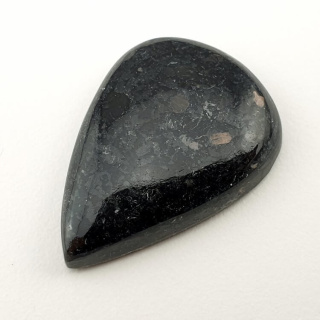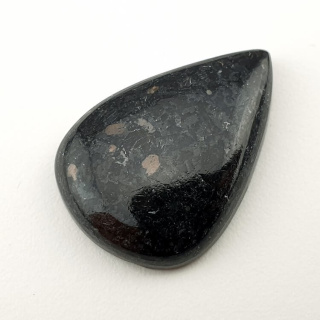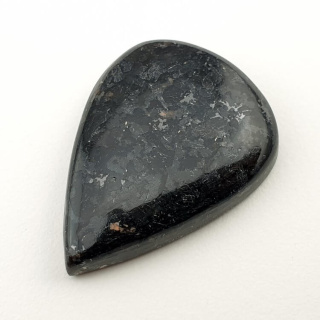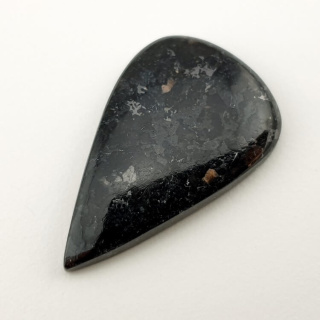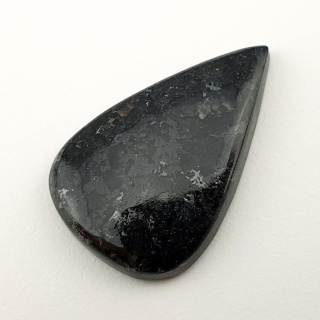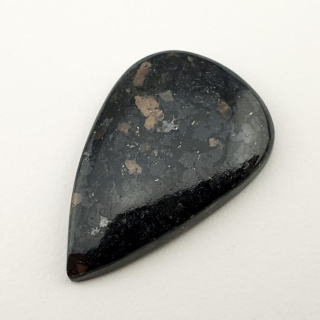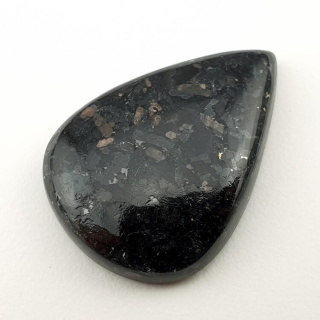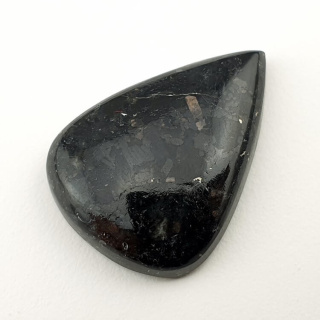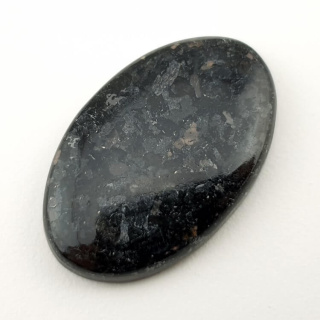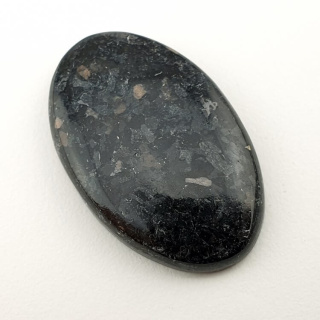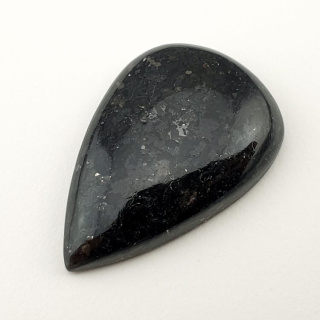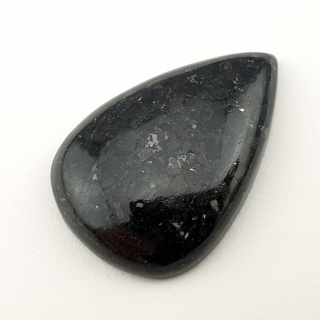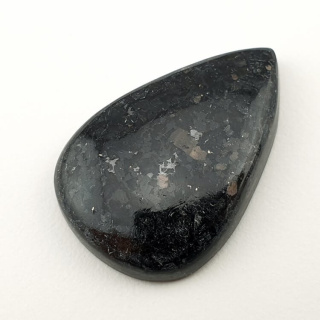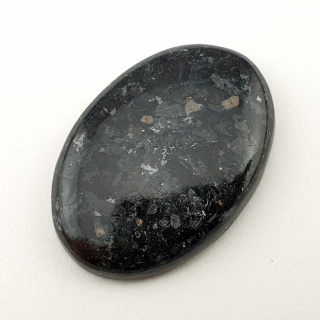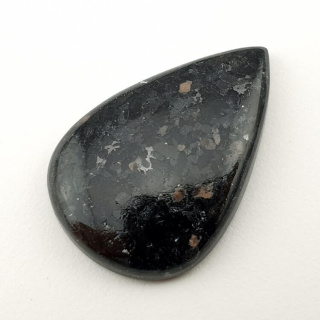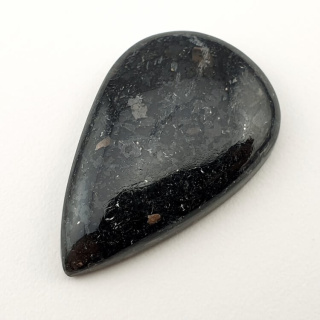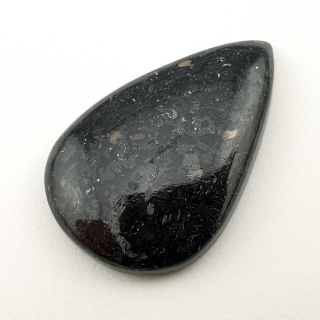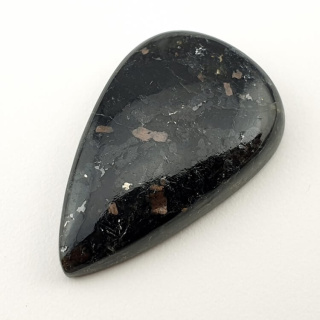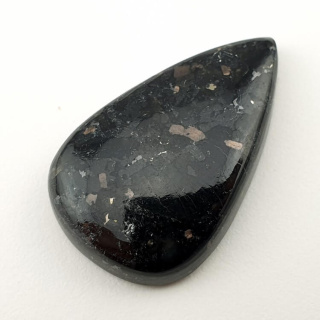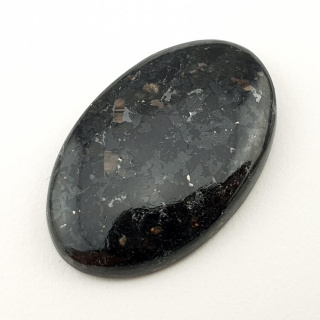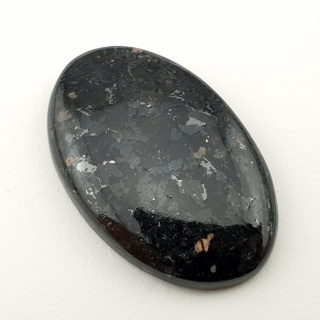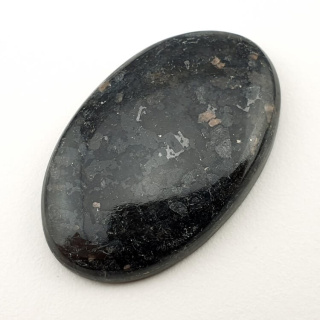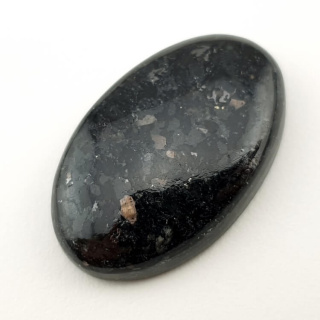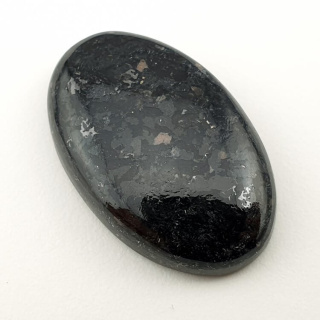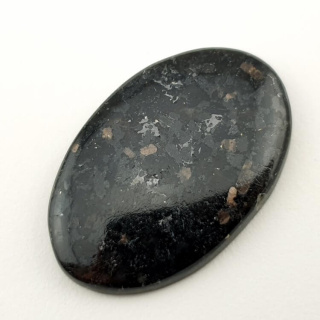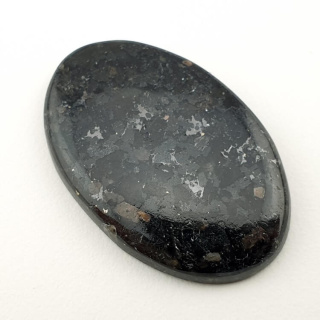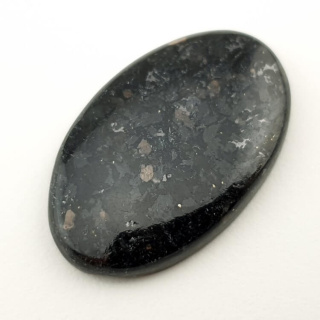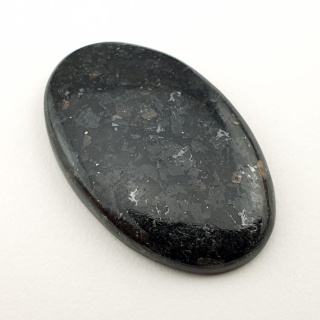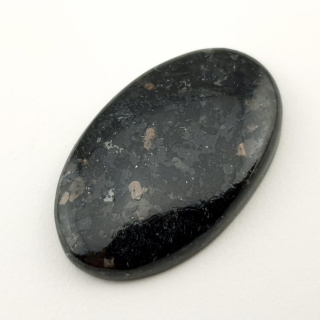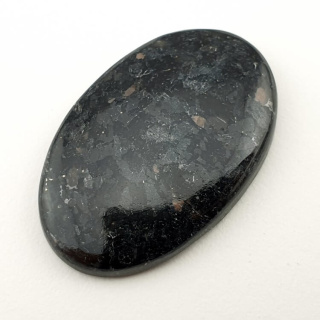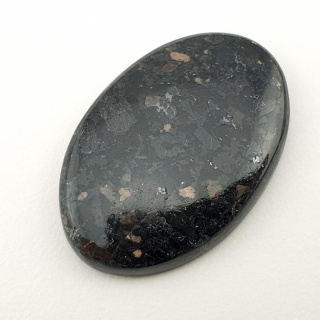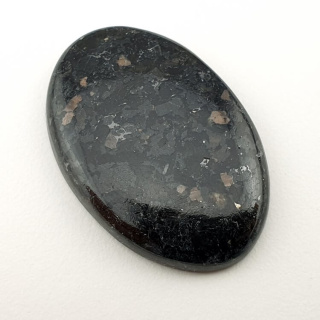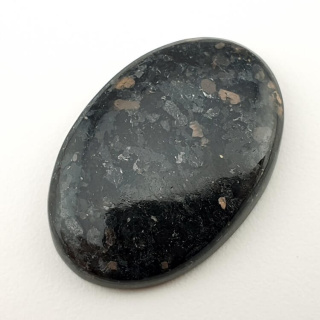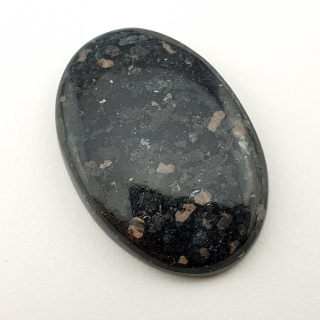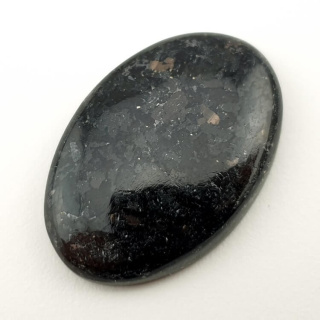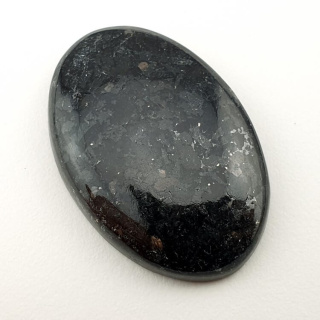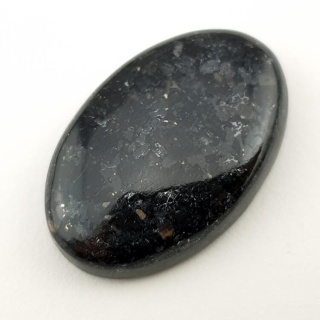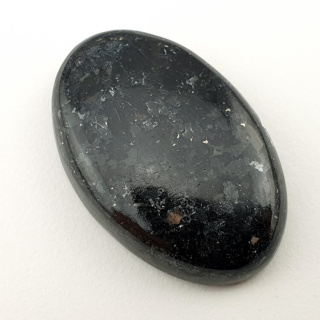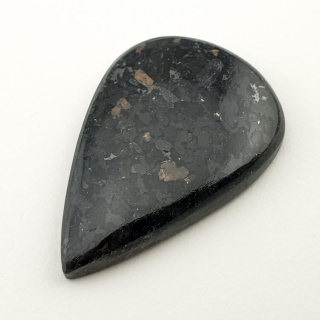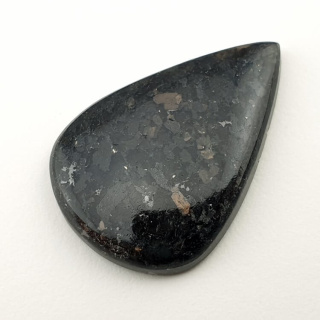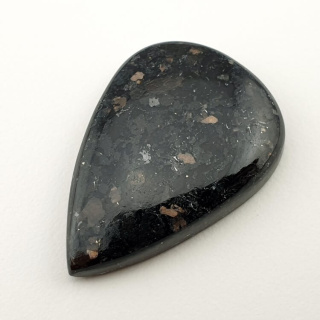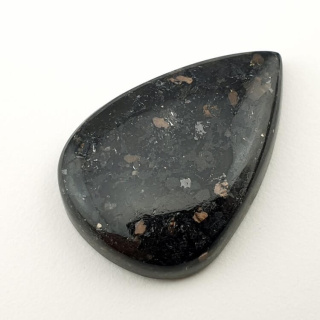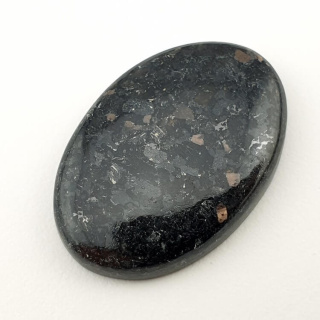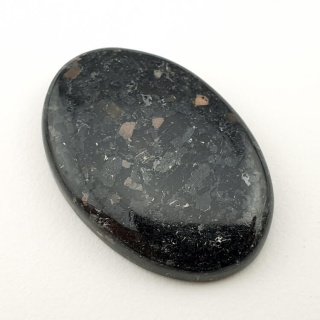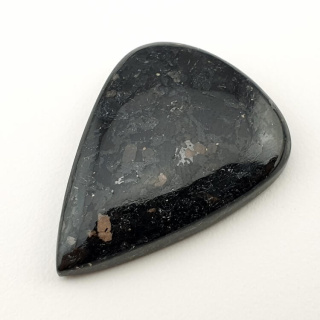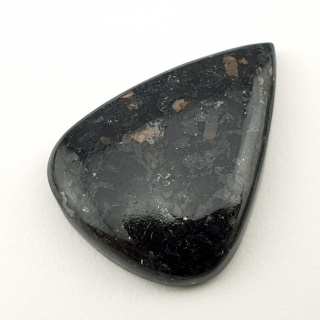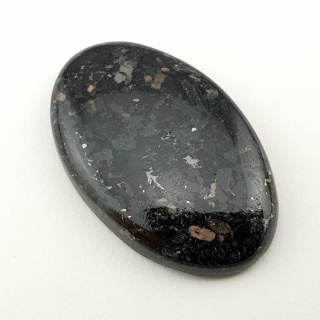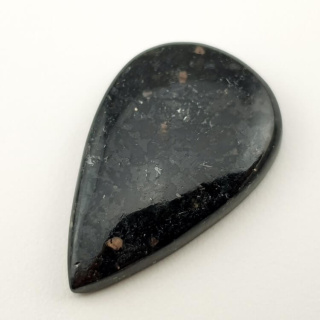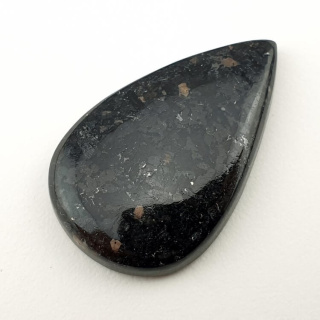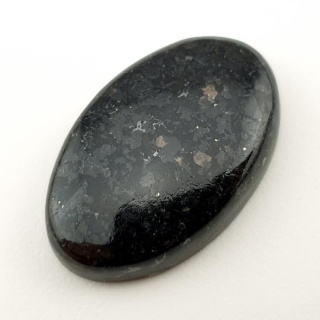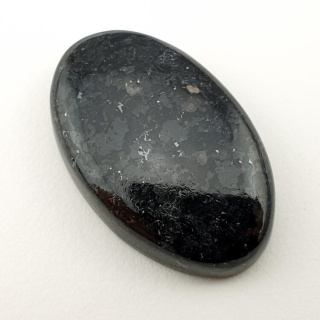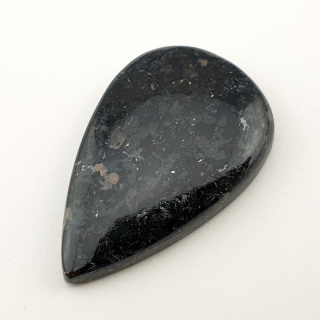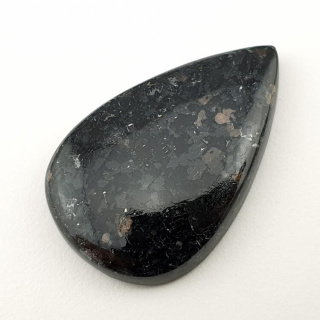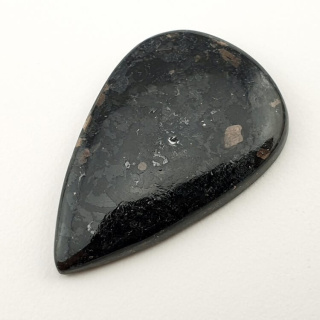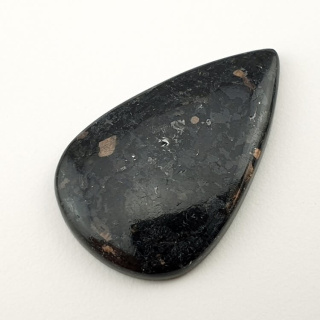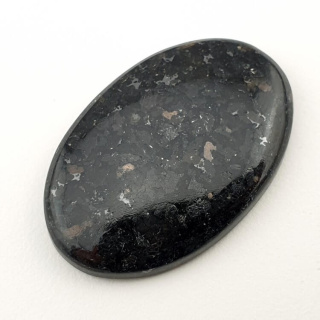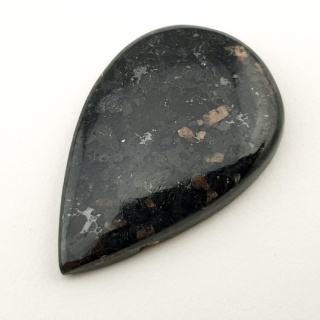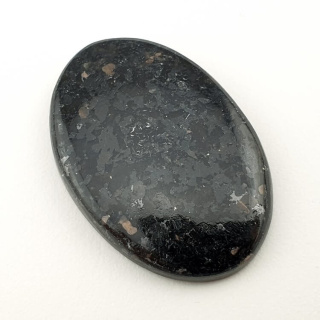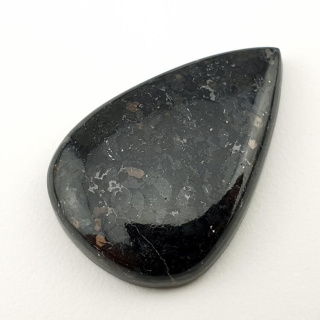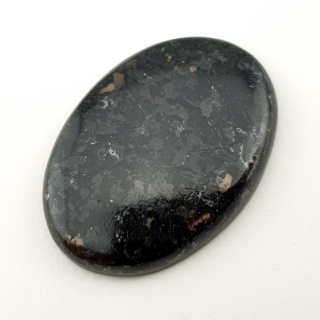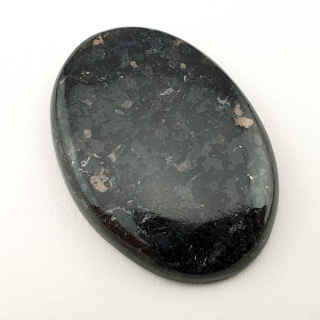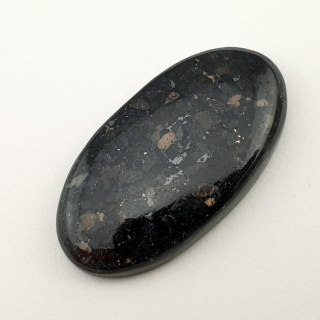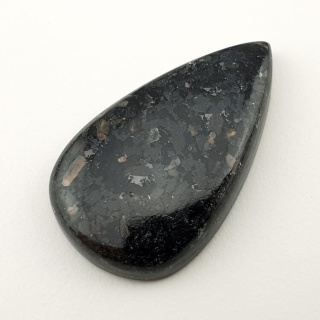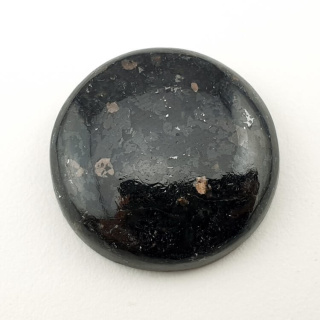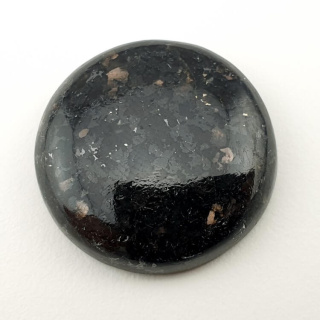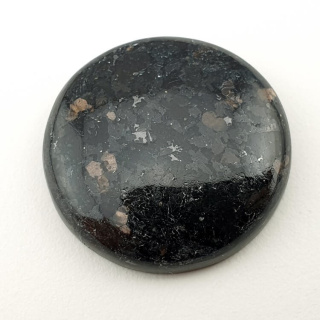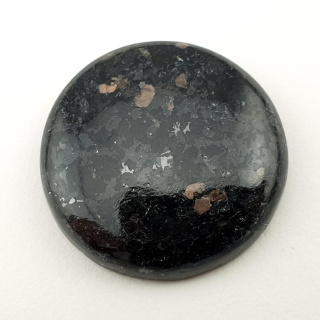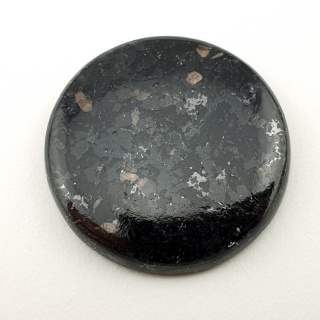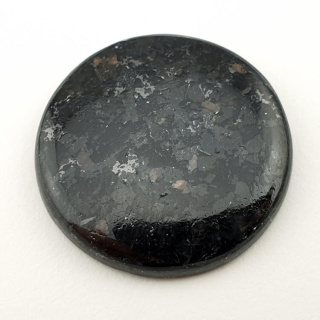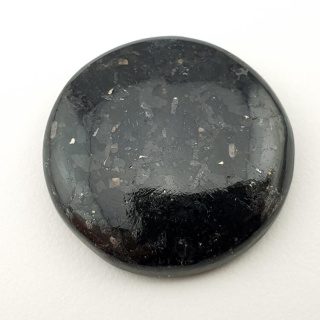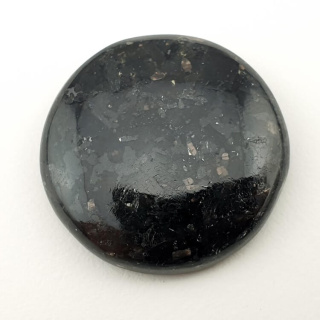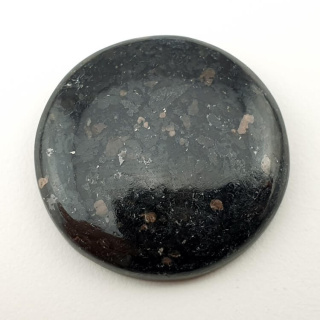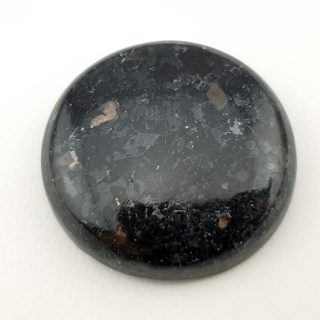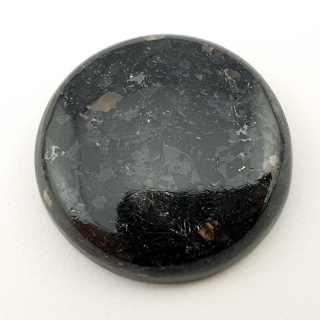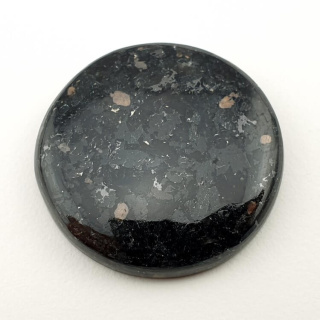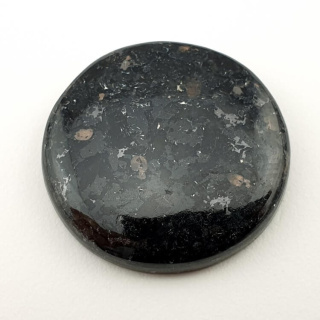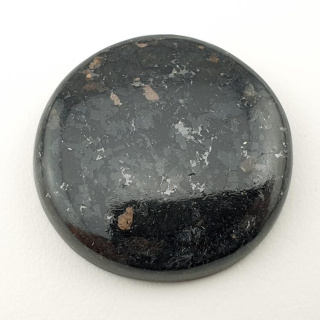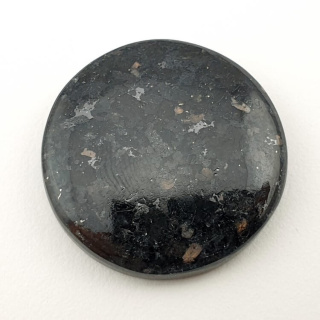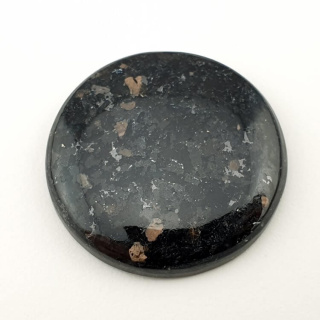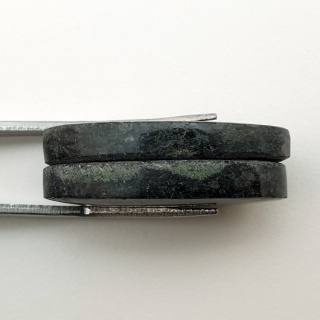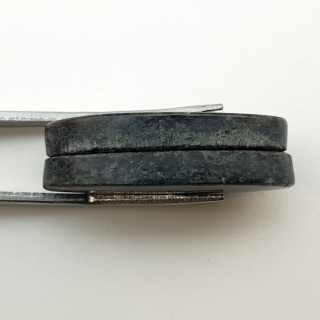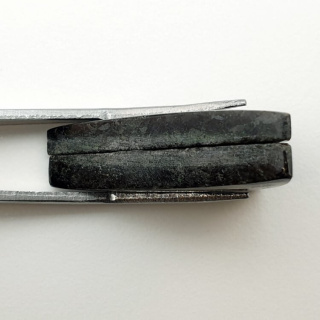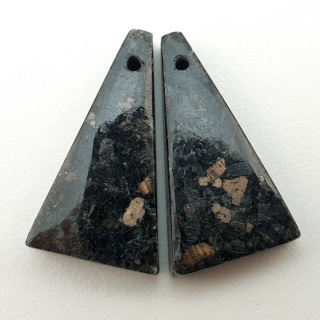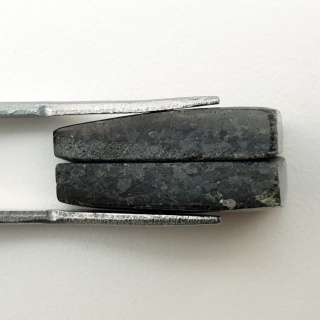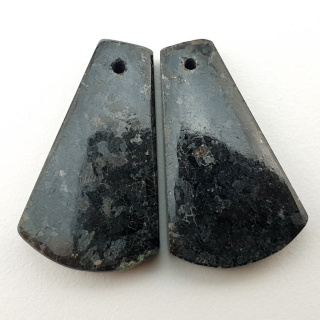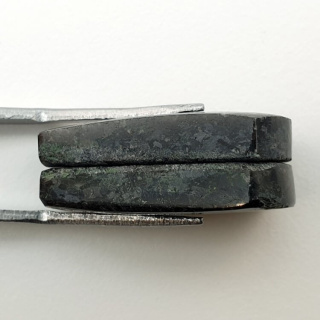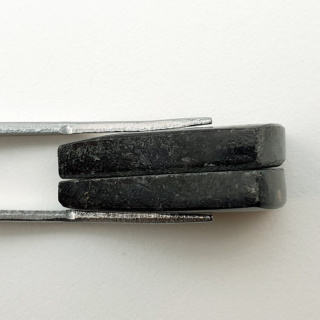Nuummite: A rare stone of protection and power from Greenland
Number of products : 68What is nuummite?
Nuummite is a rare black or dark gray mineral that comes from Greenland. Its name comes from Nuuk, the capital of Greenland, where it was first discovered in 1982.
Nuummite is a mixture of two minerals: anthophyllite and gedrite, which gives it a distinctive, shiny appearance with unique golden, copper, or silver stripes. Nuummite is often valued as a gemstone due to its rarity and unique appearance. It is also attributed with various metaphysical properties. It is believed to have strong protective properties and is used in meditation and as a protective amulet.
What are the physical and chemical properties of nuummite?
Nuummite is a unique mineral characterized by interesting physical and chemical properties. Here are the main ones:
Physical properties:
- Color: Usually black or dark gray, with characteristic iridescent streaks in shades of gold, copper, brown, silver, and sometimes blue or green.
- Luster: It has a metallic or vitreous luster.
- Hardness: On the Mohs scale, nuummite has a hardness of 5.5 to 6, making it a fairly durable mineral, though not as hard as quartz.
- Cleavage: Nuummite has excellent cleavage, which means that it breaks easily along its crystallographic planes.
- Density: The average density of nuummite is approximately 3 g/cm³.
- Crystal structure: Nuummite occurs in the form of fibrous or lamellar crystals, which are responsible for its characteristic iridescence.
Chemical properties:
- Chemical composition: Nuummite is a mixture of two minerals, anthophyllite and gedrite, which belong to the amphibole group.
-
Anthophyllite: (Mg,Fe)_7Si_8O_22(OH)_2
- Gedrite: (Mg,Fe)_7Al_2Si_6O_22(OH)_2
-
- Metal content: Nuummite may contain varying amounts of iron, magnesium, aluminum, and other elements, which affect its color and luster.
- Chemical reactions: It is relatively resistant to chemicals, but may react with strong acids.
These properties make nuummit valuable in jewelry and for its rarity and unique appearance.
Where does nuummit come from and what is its geological significance?
Nuummit stone comes from Greenland, more specifically from the area around Nuuk, from which it gets its name. It was first discovered there in 1982. This mineral also occurs in smaller quantities in some other parts of the world, but Greenland is its most important and best-known source.
- Origin: Nuummit is formed as a result of high-temperature and high-pressure metamorphic processes that took place in the Precambrian era, i.e. over a billion years ago. Its age is estimated at around 3 billion years, making it one of the oldest minerals on Earth.
- Geological formation: Nuummit is the result of the metamorphosis of ultramafic igneous rocks that were deeply buried in the Earth's crust. These rocks underwent intense metamorphic processes that transformed the original minerals into nuummit.
- Structure and composition: Its mineral composition, mainly anthophyllite and gedrite, is rarely found in one place, giving nuummit its unique structure and appearance. This structure is the result of the orientation of fibrous crystals, which cause the characteristic iridescence.
- Significance in geological research: Nuummite is important to scientists because its age and the metamorphic processes that formed it provide information about ancient geological conditions on Earth. Analysis of nuummit can help us understand the evolution of the Earth's crust and the processes that took place billions of years ago.
- Rarity and value: Due to its rarity and unique properties, nuummite is valuable to mineral collectors and those interested in geology and Earth history.
Nuummite therefore not only has aesthetic value as a decorative stone, but also great geological significance, providing a window into the Earth's past.
What are the most distinctive visual characteristics of nuummite?
Nuummite is easily recognizable thanks to several distinctive visual characteristics that distinguish it from other minerals:
- Color: Nuummite is usually black, dark gray, or brown. The dark colors provide a backdrop for other features that make nuummit so unique. Iridescence: The most distinctive feature of nuummit is its iridescence, which is the multicolored light reflections that appear on the surface of the stone. These reflections can be golden, copper, brown, silver, and sometimes even blue or green. Iridescence is caused by light reflecting off thin, parallel layers of crystals within the stone.
- Pattern of stripes or flashes: The iridescence in nuummite often forms stripes, streaks, or flashes, giving it a unique three-dimensional effect. These patterns can resemble flames, lightning bolts, or a network of delicate threads, adding depth to the mineral. Depending on the angle of light, the mineral can change its appearance, making it fascinating to observe.
- Transparency: Nuummite is opaque, which means it does not allow light to pass through it. This is also one of the characteristics that distinguishes it from other iridescent stones such as labradorite.
These visual characteristics make nuummite not only a rare but also a very attractive mineral, prized in jewelry and by collectors alike.
What are the metaphysical and esoteric properties of nuummite?
Nuummite, also known as the “Wizard's Stone,” is prized in esoteric circles for its powerful metaphysical properties. It is believed to possess a unique energy that can influence various aspects of spiritual and emotional life. Here are some of the most well-known metaphysical and esoteric properties of nuummite:
Energy protection:
Nuummit is considered a powerful protective stone. It has the ability to create an energy shield around the person wearing it, protecting them from negative energies, psychic attacks, and bad auras. It is often used as a protective amulet.
- Shadow work: Nuummit is believed to help with “shadow work” — working with the darker aspects of our personality and subconscious. It helps to recognize and integrate these traits, leading to a deeper understanding of oneself and spiritual transformation.
- Increased intuition: Nuummit is associated with the development of intuition and psychic abilities. It is believed to help open the third eye, supporting clairvoyance, telepathy, and other forms of spiritual perception.
- Emotional healing: This stone is also used for emotional healing, helping to release old traumas and blockages. It can support therapeutic processes by helping the user understand and process difficult emotions.
- Increased vitality and life energy: Nuummite is believed to support vitality and life force. It can help you feel more energetic, motivated, and determined, which is beneficial for achieving your life and spiritual goals.
- Increased self-awareness: Nuummite is a stone of introspection and self-awareness. It helps you discover deep truths about yourself, supporting personal and spiritual growth. It can lead to a deeper understanding of your true self and your purpose in life.
- Support in meditation: Due to its strong vibrations, nuummit is often used in meditation. It helps achieve deep meditative states, enabling contact with higher dimensions of consciousness and spiritual guides.
- Enhancing magic and rituals: In magical traditions, nuummit is considered a stone that enhances the effects of magic and rituals. Due to its connection to Earth energy and ancient times, it is often used in practices related to transformation, protection, and manifestation.
Nuummit is therefore a stone with powerful spiritual properties that is valued by those seeking a deeper understanding of themselves and the world around them, as well as protection from negative influences.
Is nuummit popular in mineral collecting? If so, why?
Yes, nuummit is popular in mineral collecting, and its popularity stems from several key factors:
- Rarity: Nuummit is a mineral that is found mainly in Greenland, making it rare and sought after by collectors. The rarity of this mineral increases its value and appeal, especially for collectors who value unique specimens.
- Unique appearance: Its distinctive black color with iridescent streaks in shades of gold, copper, silver, or blue makes nuummit visually appealing. Its unique aesthetics attract collectors who appreciate minerals with a unique appearance.
- Antiquity: Nuummite is one of the oldest known minerals, with an estimated age of around 3 billion years. This antiquity adds to its historical and geological significance, attracting collectors interested in minerals with a deep history on Earth.
- Metaphysical properties: Due to its attributed metaphysical properties, nuummite is popular not only among collectors but also among those involved in esotericism. Collectors who believe in the energetic properties of stones often seek nuummite for their collections because of its protective and transformative properties.
- Difficulty in processing: Due to its structure and hardness, nuummite is difficult to process, which means that well-made polished specimens or jewelry made from nuummite are prized and sought after by collectors.
- Investment value: Due to its rarity and popularity, nuummite may also have investment value. Collectors may see it not only as an aesthetic and spiritual addition to their collection, but also as a potential profit in the future.
In summary, nuummite is popular in mineral collecting due to its rarity, unique appearance, antiquity, attributed metaphysical properties, and investment value. Its unique characteristics make it a mineral prized by collectors around the world.
![[{[item.product.name]}]]([{[item.product.photo.url]}] 75w)

